Do you have a question about the Yamaha Clavinova CLP-920 and is the answer not in the manual?
Ensure local AC voltage matches the unit's requirement.
Key safety guidelines to prevent injury, electric shock, and damage.
Highlights sonic realism, playability, graded hammer keyboard, and dual mode.
Explains how to turn on the unit, adjust volume, and use the demo function.
Explains TO HOST, HOST SELECT, and MIDI ports for computer connectivity.
Explains direct connection via TO HOST and HOST SELECT for Macs.
Explains direct connection via TO HOST and HOST SELECT for IBM PCs.
How to connect using a USB interface like the Yamaha UX256.
Addresses issues like no sound, pedal problems, and interference.
Chart detailing which MIDI messages are transmitted and recognized.
Lists parts and begins attaching side panels to the pedal box.
Covers attaching the rear panel and installing the main keyboard unit.
Details connecting the pedal cord, setting voltage, and making final adjustments.
Basic safety measures for using electrical and electronic products.
Warnings regarding power cords, ventilation, temperature, and product usage.
Ensure local AC voltage matches the unit's requirement.
Key safety guidelines to prevent injury, electric shock, and damage.
Highlights sonic realism, playability, graded hammer keyboard, and dual mode.
Explains how to turn on the unit, adjust volume, and use the demo function.
Explains TO HOST, HOST SELECT, and MIDI ports for computer connectivity.
Explains direct connection via TO HOST and HOST SELECT for Macs.
Explains direct connection via TO HOST and HOST SELECT for IBM PCs.
How to connect using a USB interface like the Yamaha UX256.
Addresses issues like no sound, pedal problems, and interference.
Chart detailing which MIDI messages are transmitted and recognized.
Lists parts and begins attaching side panels to the pedal box.
Covers attaching the rear panel and installing the main keyboard unit.
Details connecting the pedal cord, setting voltage, and making final adjustments.
Basic safety measures for using electrical and electronic products.
Warnings regarding power cords, ventilation, temperature, and product usage.
| Type | Digital Piano |
|---|---|
| Number of Keys | 88 |
| Sound Source | AWM (Advanced Wave Memory) |
| Effects | Reverb, Chorus |
| Amplifier | 20W x 2 |
| Polyphony | 64 |
| Pedals | 3 (Damper, Sostenuto, Soft) |
| Key Action | Graded Hammer Effect (GHE) |
| Touch Sensitivity | Yes (4 levels) |
| Finish | Dark Rosewood |

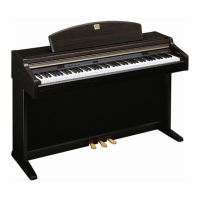
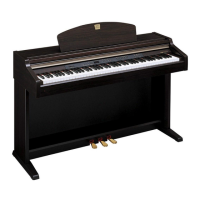

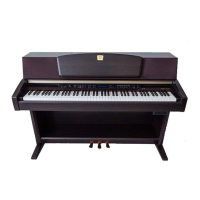




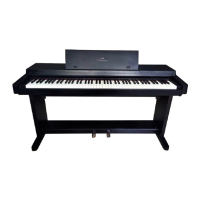
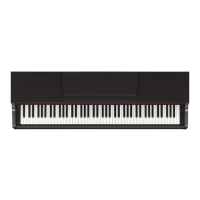
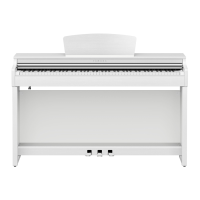
